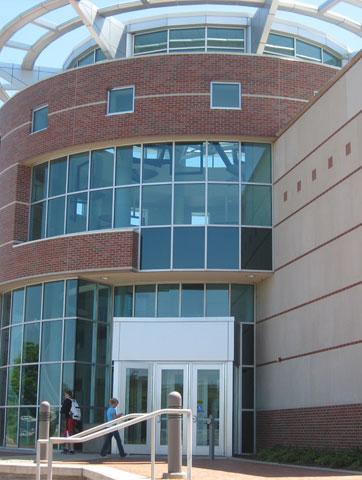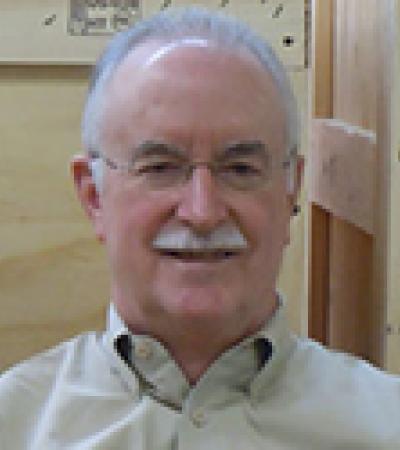
My library had the privilege of hosting the ALA traveling exhibit “Listening to the Prairie: Farming in Nature’s Image” in 2001. It was an extremely successful but challenging experience. My small library with two staff members and eight student assistants hosted the exhibit for six weeks AND provided a host of complementary programs on campus and in the community as well as provided tours for the exhibit and our campus prairie. I could say our success was due to great organization (it was), an involved committee (they were), and a really cool library and prairie staff that was willing to stretch beyond our limits to provide our campus and community a unique educational experience (we did!).
Actually, it was all those things and more. Never be afraid to try; the following are some suggestions for hosting a successful exhibit. These ideas continue to work for me; we will be hosting the National Library of Medicine exhibit “Harry Potter’s World: Renaissance Science, Magic and Medicine” from October 31–December 11, 2010!
Exhibits
• Know why you want to host a particular exhibit. It will help in gathering support and planning activities.
• Gather support for the exhibit during the application process by having community and organization leaders write letters. You’ll have a ready-made committee to start with if you are successful.
• Look for an exhibit that provides training, hands-on experience with the exhibit (if possible), resource materials and technology support.
• Hands-on exhibits work best if you are targeting children. It keeps their interest longer.
• Visualize your space with the exhibit for possible layout before you actually get it. That way, you can be flexible if you have to rearrange it.
• Guesstimate how much it will cost to host the exhibit. Know your upfront costs (if you have to pay for shipping, certain number of programs required to have, etc).
• Plan to include local components to enhance the experience of your visitors.
Funding
• Solicit from all possible sources: PR/Communications and other departments, student groups and members; but be sure to state the value of hosting the exhibit to them and to the community.
• Look to Alumni and Friends groups for support.
• Partner with other groups to host events.
• Look for in-kind contributions and gifts from businesses.
• Apply for local and state arts and humanities grants.
• Apply for grants from relevant foundations and organizations.
Planning Ideas
• Find a great assistant to help you and keep you sane!
• Ask your staff for ideas for programs and exhibit layout
• Create a committee that will be useful to you; your original application partners will work for starters
• Think of your audience; do you need to include alternative language materials and signs or use more simple language in descriptions?
• Think of accessibility in terms of layout location and in materials prepared; do you need to provide some large print or audio materials or include accessibility information for visits?
• Utilize any materials and resources that are provided with the exhibit, but feel free to add your own.
• Create handouts and activities for all age levels.
• Use plenty of signs using any graphics provided. You can never have too many directional and information signs, both inside and outside.
• Many exhibits require a final reporting. Designate someone to take photographs during set-up, tours and activities. It will be a useful record for you later and frees the coordinator up for other activities.
• Keep copies of all packets, handouts and activities for samples for any final reporting but also to serve as an archive for you.
• Use as many volunteers as possible. Be sure to train them well beforehand and clearly communicate your expectations. Ask museum volunteers, alumni, community volunteers, retired teachers, even high school students who must perform community service.
• Be flexible; the unexpected can happen with layouts and programs

Marketing
• Collaborate with another organization or a public library whenever possible, especially with companion programs. It saves you money and time.
• Be clear about how much you can afford to advertise. Work with local PR avenues to advertise (newspapers, radio, company and organization newsletters, Chamber of Commerce newsletters, community calendars, word-of mouth, websites, direct mailings); but utilize free or low-cost sources first.
• Have the coordinator write directly to relevant groups (teachers, educators, groups, etc).
• Send to Boy and Girl Scouts, Home School groups, academic institutions in your area, churches, senior citizen groups, public libraries, community organizations, etc.
• Have other groups link to your exhibit website if you have one or have them mention it on their site.
• Use the social media tools to your advantage: Facebook, Twitter, blogs, Flickr, etc.
Miscellaneous Tips
• Keep a sense of humor. It will be a time-consuming and exhausting process, especially for the coordinator.
• Make sure you provide for feedback (comment card, guestbook, follow-up survey, etc.). Again, it may be needed for a final reporting.
• Be realistic. Some programs will be more successful than others.
• Involve as many people as possible. They will have more ownership in the exhibit and can be spokespersons for the exhibit in the community.
• Above all, thank all those involved in the exhibit, both publicly and privately, including donors, sponsors, workers, maintenance staff, etc. They all play an important role in the success of your exhibit.
• Don’t be afraid to consider creating a traveling exhibit, even if it is local. Many people can benefit from the shared knowledge.
Don’t be afraid to seek out and pursue innovative or unusual exhibits. After all, you are in the business of providing learning opportunities and experiences in unique ways!


